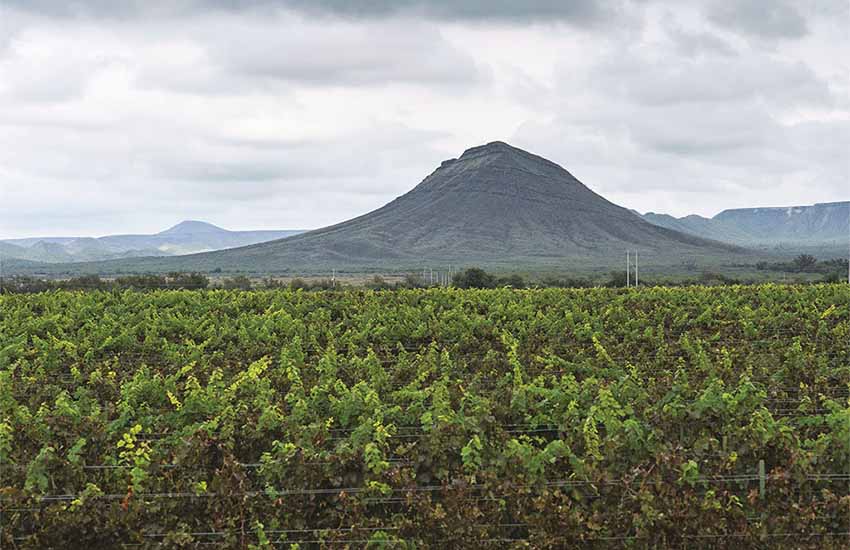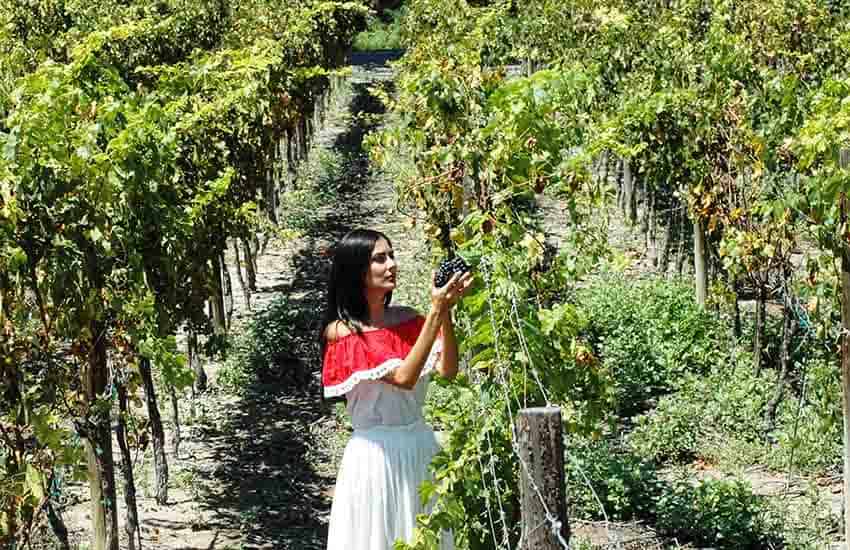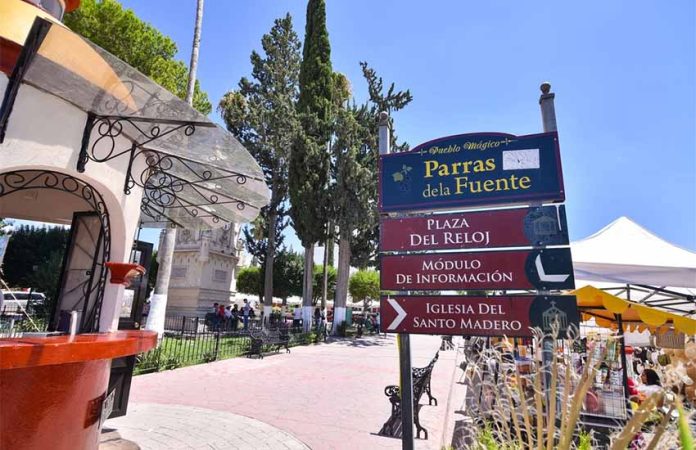Parras de la Fuente, Coahuila, is a literal and economic oasis wedged in the seemingly endless Chihuahuan Desert.
It is a green spot with trees defining the exact extent of where the underground water table rises, as underground flows are blocked by the mountain ranges that separate Coahuila from Zacatecas. The difference in vegetation is striking, especially when seen from the rock outcropping of San Madero Church.
The only settlement of any size between Coahuila’s cities of Torreón and Saltillo, Highway 40 is its lifeline to civilization.
Despite its geographical isolation, Parras has been an important historical and economic center regionally and nationally. With 400 years of European occupation, agriculture and ecology, it was the first northern community to be named a Pueblo Mágico in 2004.

The vast majority of people who visit do so for one reason — wine. It has played an important role in the area’s history and remains extremely important today. The oasis got Spanish attention early in the colonial period. They had taken control by control by 1578, with the name referring to the wild grapes growing here.
There are a number of internationally-recognized establishments here, but Casa Madero still dominates local winemaking. Founded in 1597 as Hacienda San Lorenzo, it is considered to be the oldest winery in the Americas.
Today, Casa Madero is still extremely important and still enjoys great prestige despite the rise of winemaking in Baja California and other areas of Mexico. Casa Madero is often called upon by new wineries for advice and approval.
Parras’s designation as a Pueblo Mágico was not predicated solely on wine, however. The official reasons for the recognition include its history — it was the birthplace of revolutionary icon and former Mexican president Francisco I. Madero.
Its natural springs, its colonial-era construction in the historic center, its festivals dedicated to the town’s foundation, a cross credited with miracles and local crops such as pecans, figs and pine nuts were also reasons for the designation. It’s also known for cajeta (dulce de leche).
Most Parras wineries are nowhere near as old as Casa Madero, but in the last couple of decades, newer arrivals, such as Rivero González and Don Leo, have been extending Parras’s reputation internationally, introducing new grape varieties and even Mexico’s first kosher wine. There is even one winery, Hacienda de Perote, that makes the cousin to tequila and mezcal, sotol, in addition to wine.
Admittedly, there is something a bit odd about naming Parras as a Pueblo Mágico. There are only two main areas for tourists to go: the wineries on the outskirts and the historic center. Understandably, the vineyards are located outside the town proper, but their wines do not seem to have an obvious presence downtown. I saw only one or two shops offering local vintages, and far fewer fine restaurants than I would have expected.
One reason for this is that the wineries themselves offer tours, upscale restaurants, lodging, invited chefs and opera singers and more. Everything you need for a perfect wine weekend is at one or more of these establishments.

The municipal government has been trying of late to attract tourists interested in more than just wine: in March, the local government created a new tourism arm to promote different activities in and around the city, although many of them are, again, outdoor activities not in the historic center.
The large historic center with many mansions indicates that Parras has been a city for quite some time, but it also has a ring of cinder block buildings indicating rapid, recent expansion. This clashes with the reputation of Pueblos Mágicos as small communities for people to go to appreciate traditional Mexico. And in order to appreciate both the wine and Parras’ historic center, you will have to ignore the modern, sometimes poor, areas between the two.
Leigh Thelmadatter arrived in Mexico 18 years ago and fell in love with the land and the culture in particular its handcrafts and art. She is the author of Mexican Cartonería: Paper, Paste and Fiesta (Schiffer 2019). Her culture column appears regularly on Mexico News Daily.
